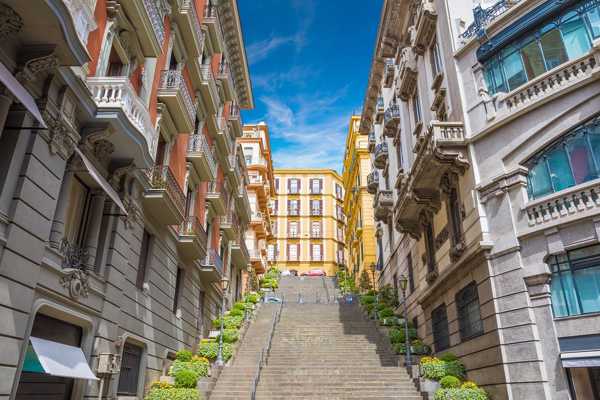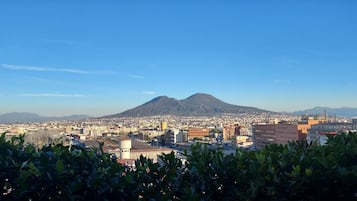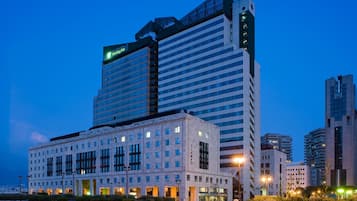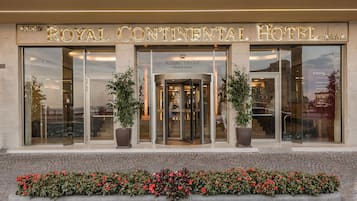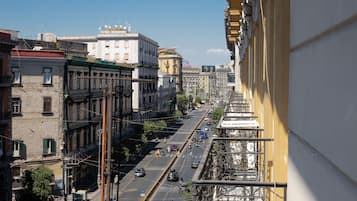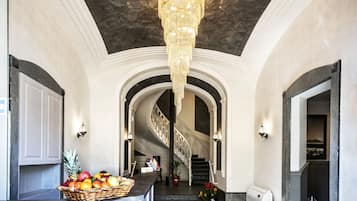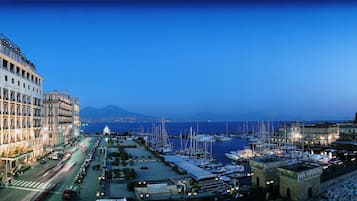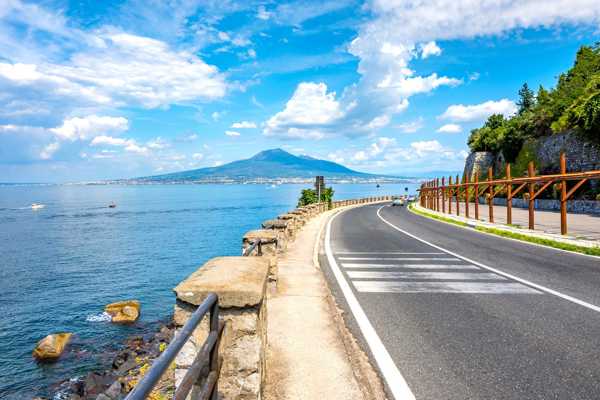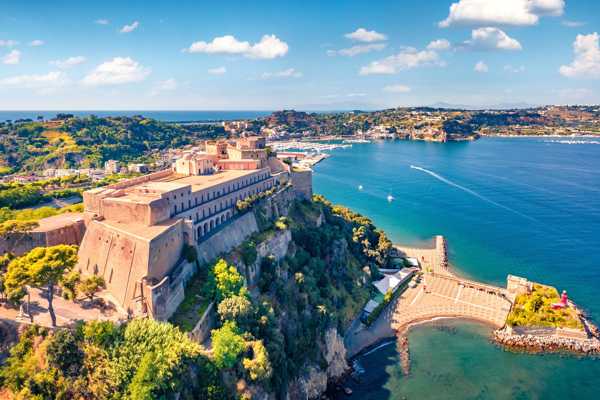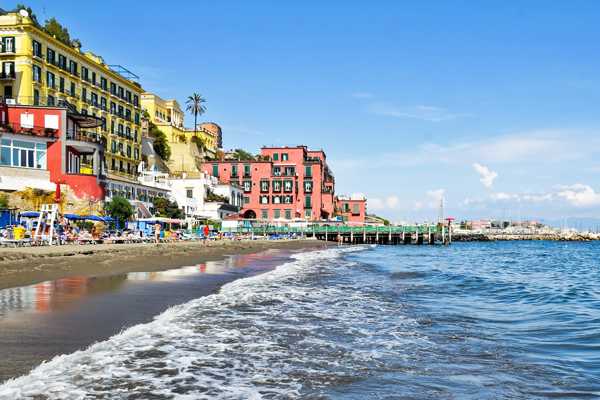Iconic buildings and places in Naples reflect the city's changing tastes and fortunes over the centuries. New buildings with innovative designs have only added to the vivid architectural panorama of Naples. Ever since the city was founded as Neapolis by Greek settlers in 470 BC, it has endured the rise and fall of several monarchs and empires.
Today, you can visit many buildings and archaeological sites to learn about the city’s storied past. Some of the most famous landmarks of Naples include the ruins of ancient Pompeii, Gothic churches, and a sinuous postmodern high-speed train station.
- 1
Royal Palace of Naples (Palazzo Reale di Naples)
17th-century showcase of noble splendour and history

- History
- Photo
The Royal Palace of Naples is a majestic building that has been a prominent feature in the city's centre since it was built in the early 17th century. It was built during the Spanish occupation, and over the centuries, served as the centre of power for Austrian and Bourbon monarchs. The structure was last occupied by the House of Savoy before turning into a historical museum in 1919.
Set in the Piazza del Plebiscito, the palace is both a museum and cultural centre. You can admire its original Renaissance architecture and grand features like a neoclassical staircase and hanging gardens. It also contains a rich collection of art and artefacts.
Location: Piazza del Plebiscito, 1, 80132 Naples NA, Italy
Open: Thursday–Tuesday from 9 am to 8 pm (closed on Wednesdays)
Phone: +39 06 3996 7050
Map - 2
Ruins of Pompeii
A Roman city buried by a volcanic eruption in AD 79
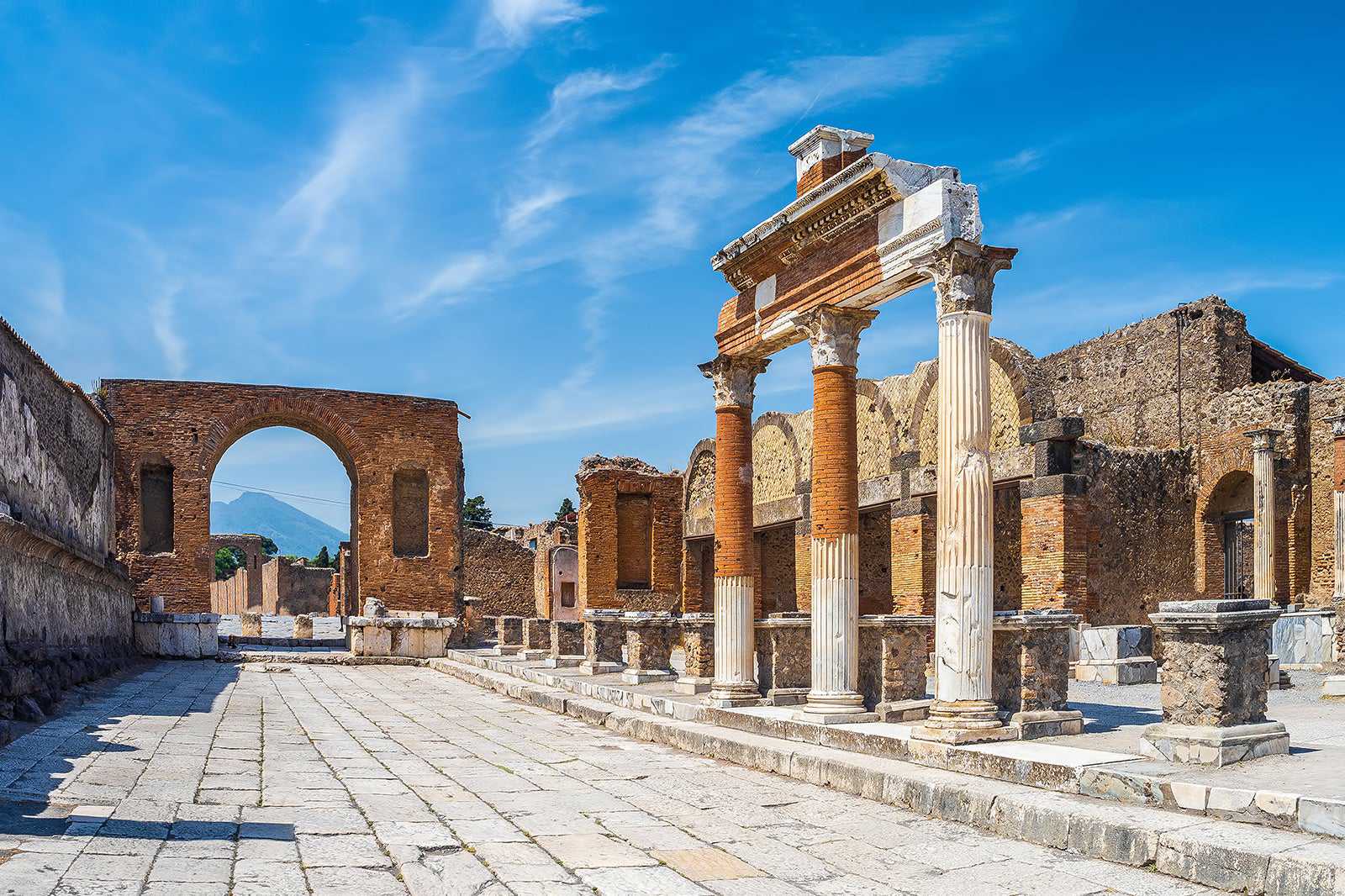
- History
- Photo
The ancient city of Pompeii was destroyed by the eruption of Mount Vesuvius in AD 79, but this disaster created one of the most fascinating and well-preserved archaeological sites in the world. Excavations over the past several hundred years have unearthed eerily preserved city streets, public buildings, villas, temples, and baths covering a vast area of more than 160 acres.
Some of the most-visited places in Pompeii include the House of the Faun, with its mosaic of the Battle of Alexander at Issus, the Stabian baths, and a brothel with erotic frescoes offering a peek into the risqué habits of Roman-era people. The ruins of Pompeii are around 25 km southeast of Naples. There are many guided tour options, but you can explore the site on your own by purchasing an entry fee.
Location: Via Villa dei Misteri, 1, 80045 Pompei NA, Italy
Open: Daily from 9 am to 7 pm
Phone: +39 081 857 5111
Map - 3
Naples Afragola train station
Modern railway hub designed by an iconic architect
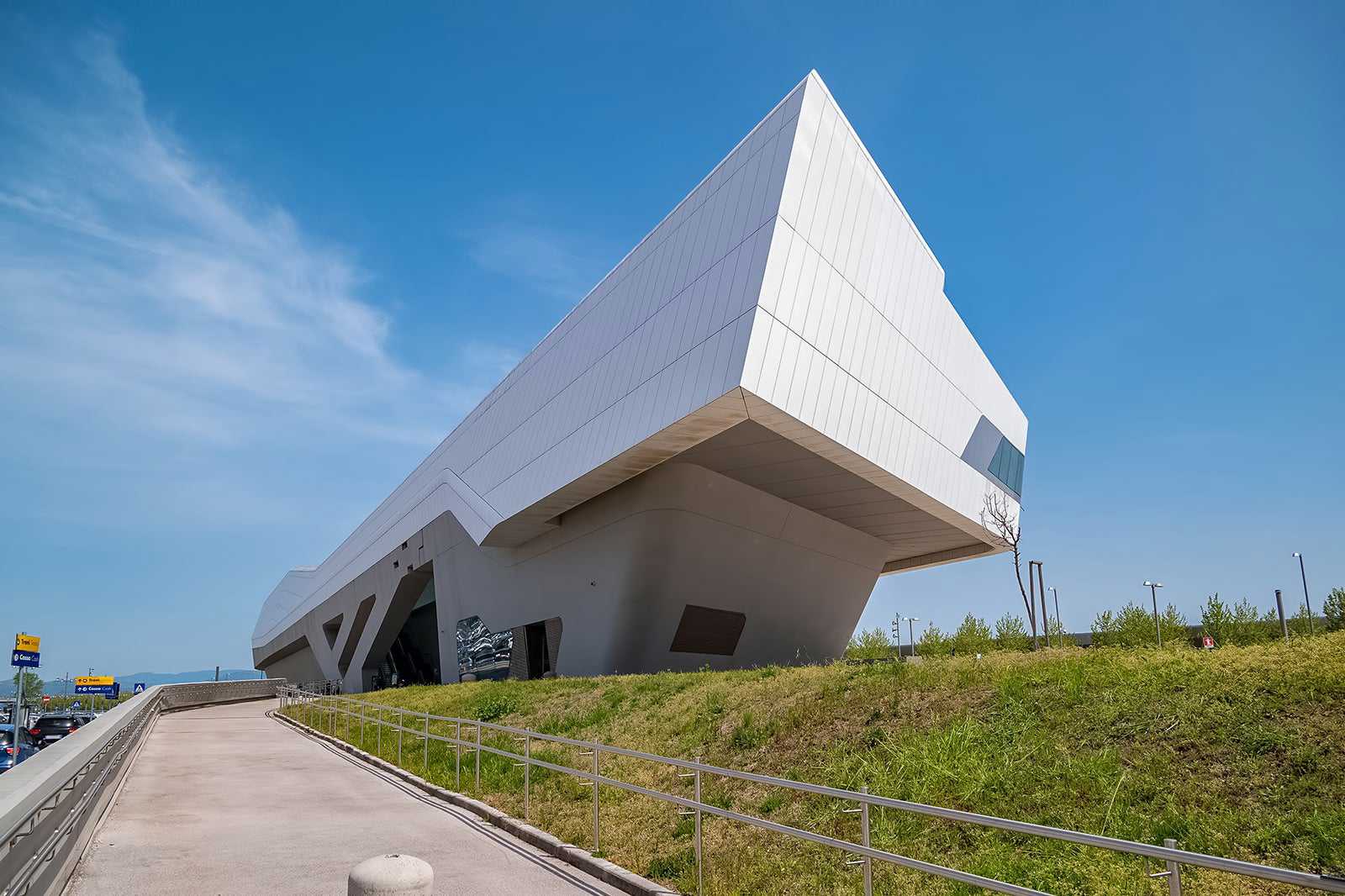
- History
- Photo
The Naples Afragola train station is a fine place to start a grand Italian rail journey. Its sleek and futuristic design was created by famed architect Zaha Hadid. Opened in 2017, the station is known as the “Gateway to the South”, serving as a railway hub for inter-regional lines, high-speed lines to Rome and other cities, and a local commuter line.
Huge glass panels extending across the exterior make the Naples Afragola train station a bright and airy space. You can explore its central atrium, as well as several shops, restaurants and bars before catching your train.
Location: 80021 Afragola, Metropolitan City of Naples, Italy
Map - 4
Galleria Umberto I
Shopping arcade with an elegant 19th-century design

- History
- Photo
- Shoppers
Galleria Umberto I is an elegant shopping arcade that has lost none of its eye-catching grandeur since it first opened in the late 19th century. Designed to uplift a decaying neighbourhood at the time, it has remained a popular place for local Neapolitans and visitors to gather, dine, and shop.
Galleria Umberto I sits in central Naples, near iconic landmarks like the San Carlo Theatre, Royal Palace, and Piazza del Plebiscito. It’s great for spending a few hours browsing the shops, taking in mural and sculpture decorations, and wandering along mosaic floors under the arcade’s grand glass-domed roof.
Location: Via Santa Brigida, 68, 80132 Naples NA, Italy
Map - 5
Naples Cathedral
A chapel that honours the patron saint of the city of Naples

- History
- Photo
The Naples Cathedral is the city’s main Roman Catholic church. Inaugurated in 1315, the structure is highly revered by city residents for its chapel of San Gennaro (St. Januarius), the patron saint of Naples.
The chapel is steeped in beautiful Baroque art and architecture, including 17th-century frescoes by the artists Domenichino and Giovanni Lanfranco. Three times a year in May, September, and December, worshippers flock to the chapel to witness the miracle of the saint's blood liquefication in a holy ritual. Urns containing what's believed to be the blood of San Gennaro are brought close to a silver bust that contains his skull, turning the dried blood into liquid.
Location: Via Duomo, 80138 Naples NA, Italy
Map - 6
San Carlo Theatre (Teatro di San Carlo)
Elegant, 18th-century opera house in Naples
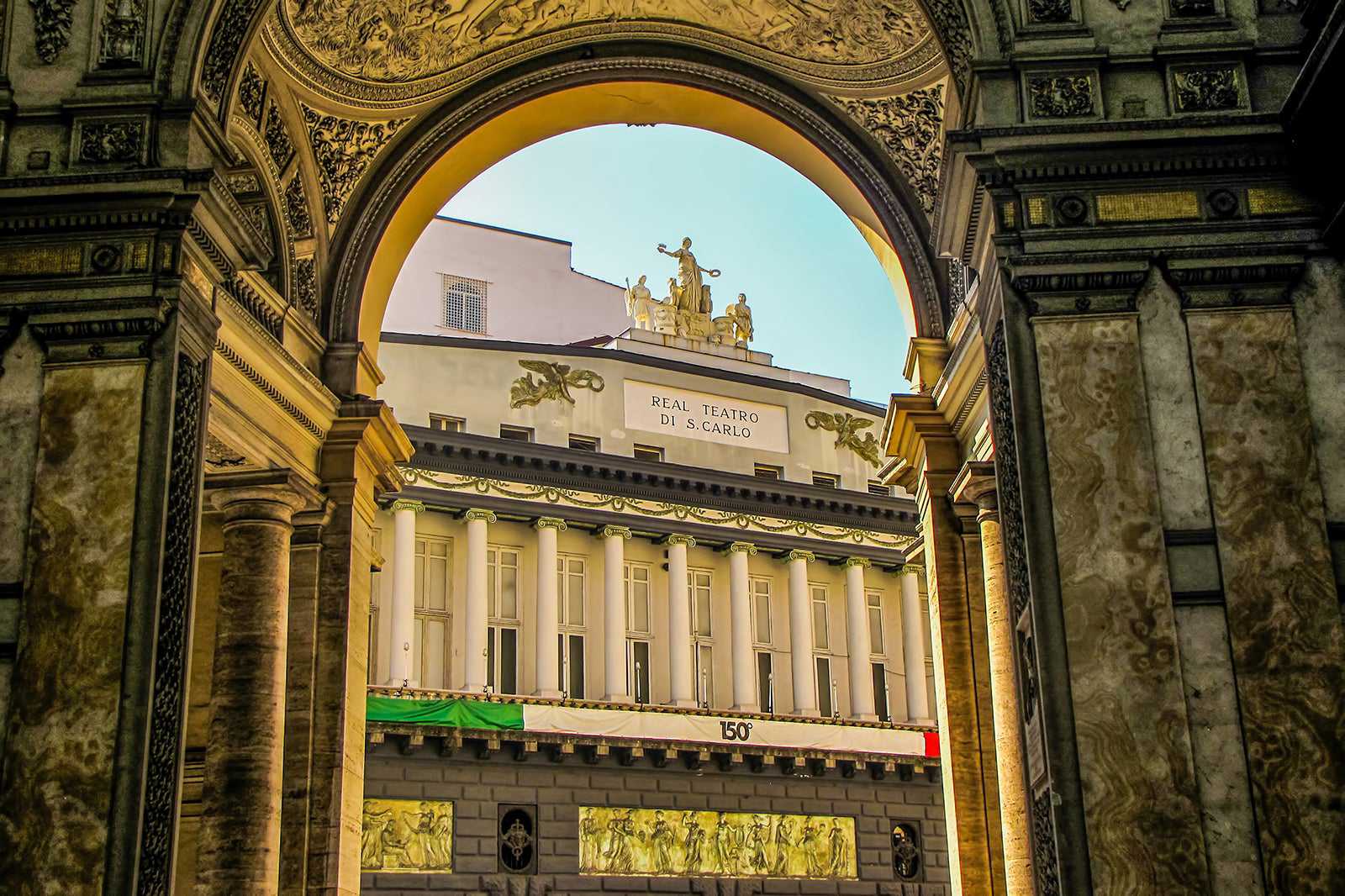
- Couples
- History
- Luxury
- Photo
The San Carlo Theatre is a luxurious opera house built during the reign of the Bourbon King Charles III of Naples in 1737. Having survived both a 19th-century fire and a WWII bombing, it is the world’s oldest working opera house.
The San Carlo Theatre’s opera season runs from late January to May, while ballet performances take place from April to early June. Guided tours are available in English and Italian, taking about 30 minutes. Its ornate Neoclassical design was the model for many famous theatres around the world.
Location: Via San Carlo, 98, 80132 Naples NA, Italy
Phone: +39 081 797 2331
Map - 7
Castel dell’Ovo (Egg Castle)
An imposing, walled fortress overlooking the Gulf of Naples

- Budget
- History
- Photo
Castel dell’Ovo, or Egg Castle, is one of the oldest standing fortifications in Naples. It sits grandly on a peninsula on the coastal fringe of the city. Lucius Licinius Lucullus built the site’s first structure built in the 1st century BC. It was then converted into a monastery in the 5th century AD.
During the 12th century, the Normans built a castle that has since served as a fortress, a prison, a Roman villa, and a royal residence. There's no fee to explore Castel dell’Ovo. It’s a spectacular vantage point for views of Mount Vesuvius and the Gulf of Naples.
Location: Via Eldorado, 3, 80132 Naples NA, Italy
Open: Monday–Saturday from 9 am to 6.30 pm, Sunday from 9 am to 2 pm
Phone: +39 081 795 6180
Map - 8
Sansevero Chapel Museum (Museo Cappella Sansevero)
An 18th-century chapel brimming with priceless religious art
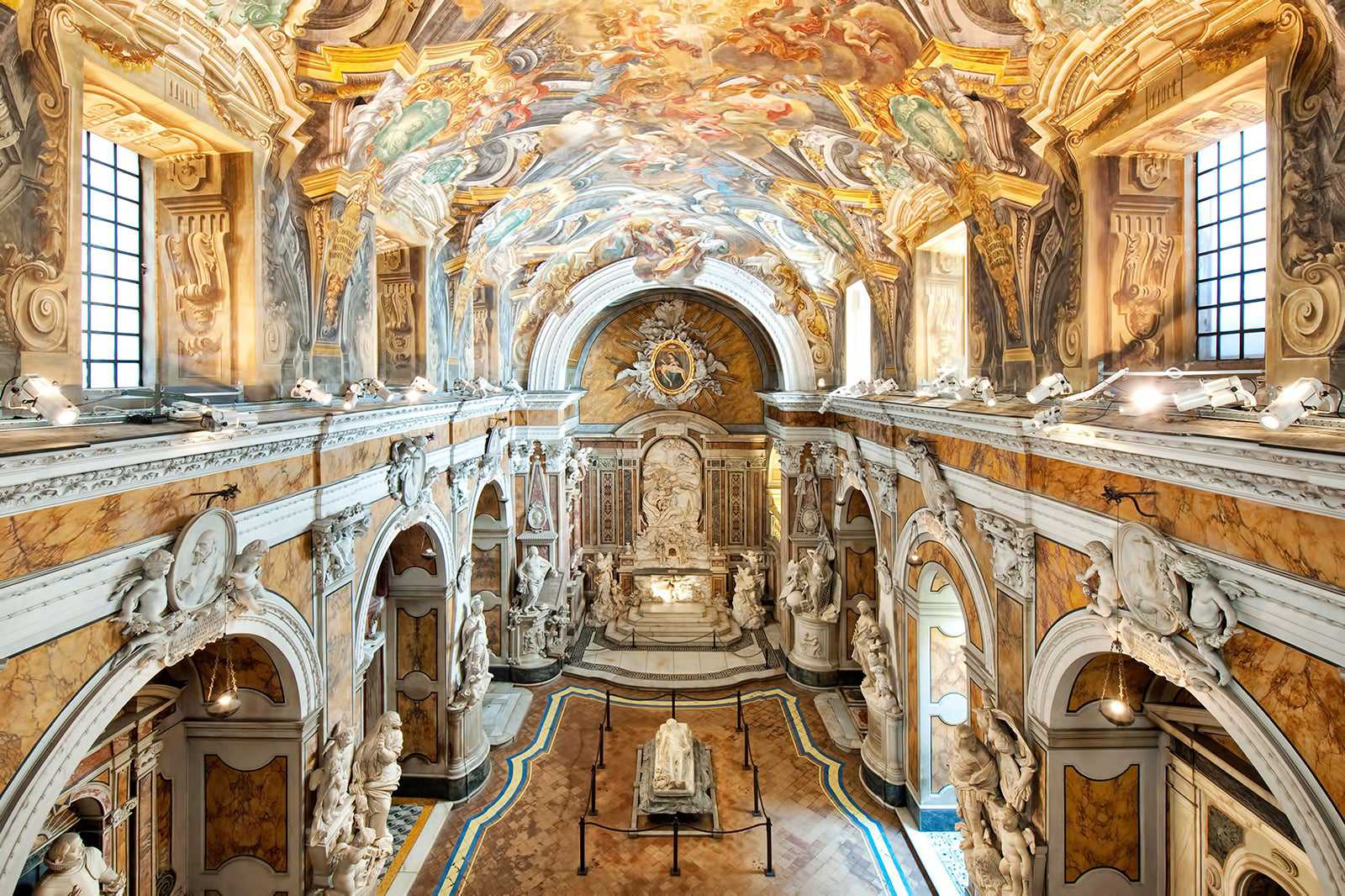
- History
- Photo
The Sansevero Chapel Museum is home to many fine works of Italian religious art, including Francesco Queirolo’s Statues of the Virtues and Giuseppe Sanmartino’s Veiled Christ sculptures. You can even see the inner workings of the preserved bodies of a man and woman at the Anatomical Machines exhibit.
The Sansevero Chapel Museum sits in Naples’s historic centre, near the Piazza San Domenico Maggiore. There is an entry fee to the museum – we highly recommend buying tickets in advance to avoid queues. Audio tours are available in several languages, including English.
Location: Via Francesco de Sanctis, 19/21, 80134 Naples NA, Italy
Open: Wednesday–Monday from 9 am to 6.30 pm (closed on Tuesdays)
Phone: +39 081 552 4936
Map - 9
San Lorenzo Maggiore Basilica
A church and historic town centre dating back to medieval times

- History
- Photo
The San Lorenzo Maggiore Basilica is a 6th-century church in Naples’s Piazza San Gaeta. It was then reconstructed in a Gothic style in the early 13th century by the Angevins royal house. The basilica offers a fascinating look into the city’s history, thanks to an extensive collection of religious art and artefacts.
Make sure to check out the archaeological remains of an ancient Greco-Roman market below the church. There is an entry fee to San Lorenzo Maggiore Basilica. You can explore the site independently, but booking a guided tour is recommended for those wanting a deeper insight into its architecture.
Location: Piazza San Gaetano, 316, 80138 Naples NA, Italy
Open: Daily from 9.30 am to 5.30 pm
Phone: +39 081 211 0860
Map - 10
Naples Underground (Naples Sotterranea)
A 2,000-year-old hidden world under the city streets
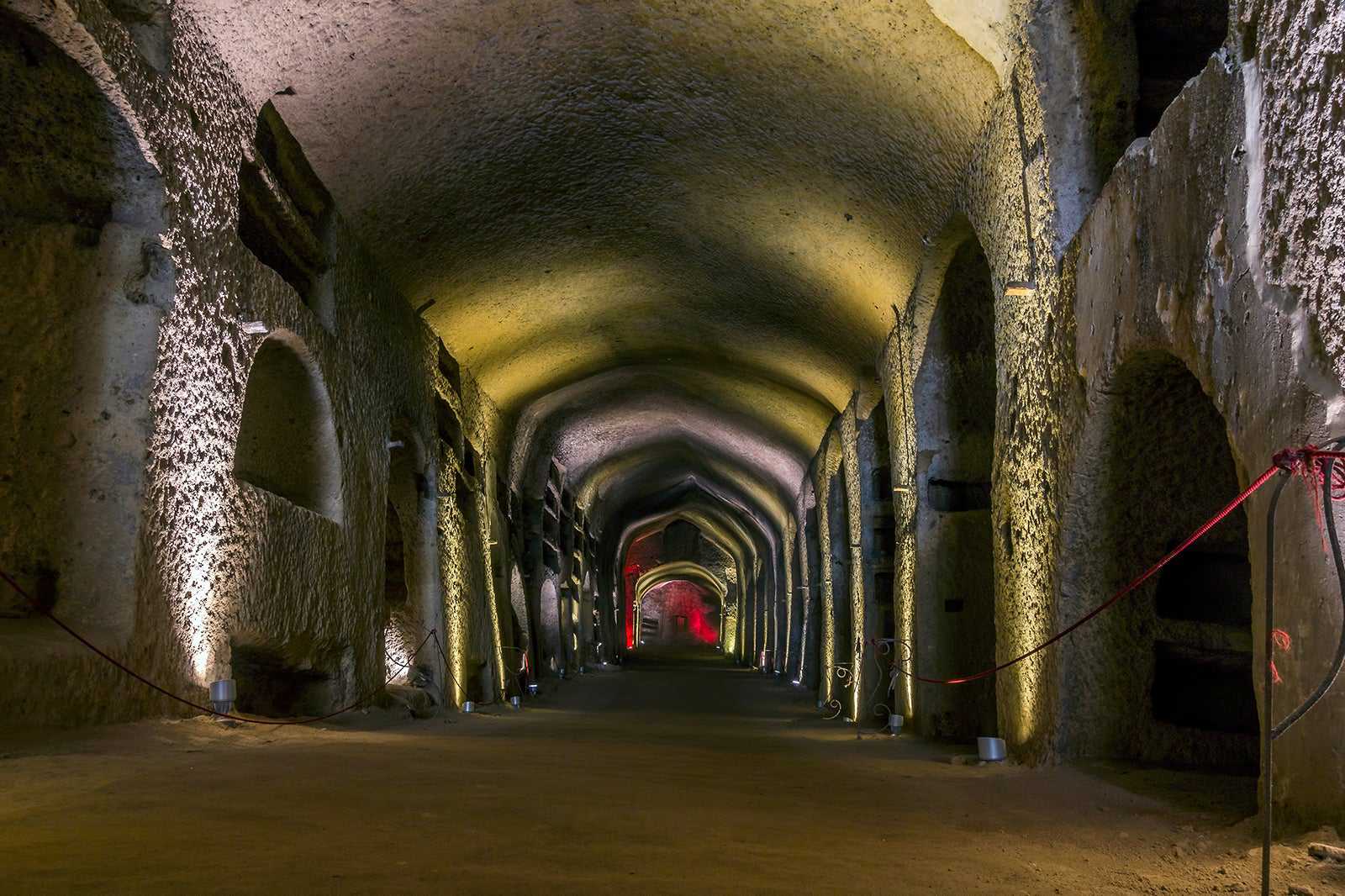
- History
- Photo
The Naples Underground is a small section of what was once a vast 450-km-long subterranean network first created by the Greeks in the 4th century BC. The Romans later expanded the underground system, which was used for centuries as aqueducts, sewer tunnels and transport networks. They even built a theatre with a private dressing room for Emperor Nero – remnants of which can still be seen today.
The last known use of the underground network was during WWII when it served as an air raid shelter for Naples’s citizens and soldiers. You can only visit the Naples Underground with a guided tour, which takes about 20 minutes.
Location: Vico S. Anna di Palazzo, 52, 80132 Naples NA, Italy
Open: Daily from 9 am to 6 pm
Phone: +39 081 400256
Map


